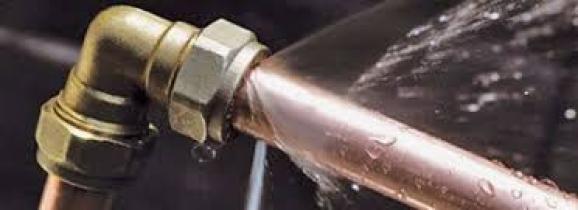Reveal the Most Frequent Roots of Leak Problems Inside Your Home
Reveal the Most Frequent Roots of Leak Problems Inside Your Home
Blog Article
The content down below on the subject of How to detect water leaks in your home is really enjoyable. Don't skip it.

Leakages not just trigger waste of water but can also cause unnecessary damages to your house and also advertise undesirable organic development. By comprehending and also looking for day-to-day scenarios that create leaks, you can secure your residence from future leakages and also unneeded damage.
Instant temperature modifications.
Extreme temperature modifications in our pipes can trigger them to broaden and contract all of a sudden. This expansion and also tightening might create splits in the pipelines, especially if the temperature level are below freezing.
Rusty water supply
This may be the reason of staining or bending on your water pipes. If our plumbing system is old, consider replacing the pipes considering that they are at a greater threat of corrosion than the newer designs.
Faulty Pipeline Joints
The factor at which your pipelines attach is regularly the weakest web link in the waterline. Pipe joints can deteriorate in time, leading to water leakages. The majority of pipe joints are not quickly noticeable. If you have loud pipes that make ticking or banging noises, particularly when the hot water is turned on, your pipe joints are probably under a lot of pressure. It is a good idea to have your plumber check your system yearly.
Intruding roots
Many water leaks start outside your house as opposed to inside it. If you see an abrupt decline in water pressure, say in your tap, require time to go out and examine your backyard. You may observe damp patches or sinkholes in your yard, which might mean that tree origins are invading water lines creating water to seep out. You can have your plumber check for intrusion, specifically if you have trees or bushes near your residential or commercial property.
Poor Water Connectors
At times, a leakage can be triggered by loosened pipes and pipes that provide your home appliances. In instance of a water connections leak, you might notice water running directly from the supply line or puddles around your home appliances.
Obstructed Drains
Blocked drains pipes might be aggravating and also inconveniencing, however they can occasionally end up triggering an overflow resulting in rupture pipes. Maintain getting rid of any type of products that may drop your drains that could block them to prevent such inconveniences.
All the above are causes of leakages yet not all water leakages arise from plumbing leakages; some leaks might come from roofing system leaks. All leakages should be repaired immediately to prevent water damage.
Leaks not just cause waste of water however can likewise create unneeded damages to your home and also advertise undesirable natural growth. By looking and comprehending for everyday scenarios that trigger leakages, you can safeguard your house from future leaks and also unneeded damage. Today, we will certainly look at six leakage triggers that may be causing your pipelines to trickle.
At times, a leak can be triggered by loose hoses as well as pipelines that supply your home appliances. In instance of a water connections leakage, you might observe water running straight from the supply line or puddles around your home appliances.
How To Check For Water Leak In Your Home
How To Check for Leaks
The average household's leaks can account for nearly 10,000 gallons of water wasted every year and ten percent of homes have leaks that waste 90 gallons or more per day. Common types of leaks found in the home are worn toilet flappers, dripping faucets, and other leaking valves. These types of leaks are often easy to fix, requiring only a few tools and hardware that can pay for themselves in water savings. Fixing easily corrected household water leaks can save homeowners about 10 percent on their water bills.
To check for leaks in your home, you first need to determine whether you're wasting water and then identify the source of the leak. Here are some tips for finding leaks:
Take a look at your water usage during a colder month, such as January or February. If a family of four exceeds 12,000 gallons per month, there are serious leaks.
Check your water meter before and after a two-hour period when no water is being used. If the meter changes at all, you probably have a leak.
Identify toilet leaks by placing a drop of food coloring in the toilet tank. If any color shows up in the bowl after 10 minutes, you have a leak. (Be sure to flush immediately after the experiment to avoid staining the tank.)
Examine faucet gaskets and pipe fittings for any water on the outside of the pipe to check for surface leaks.
Undetected water leaks can happen without the home or business owner even realizing. If you suspect a water leak, but not able to find the source. It is time to contact a professional water leak detection service, The Leak Doctor.
How To Find a Water Leak In Your Home
https://www.leakdoctor.com/blog/How-To-Check-For-Water-Leak-In-Your-Home_AE197.html

I stumbled upon that piece about Common Water Leaks In House while doing research the search engines. Sharing is nice. You just don't know, you could be helping someone out. I am grateful for your time. Come back soon.
Trust us, dial! Report this page